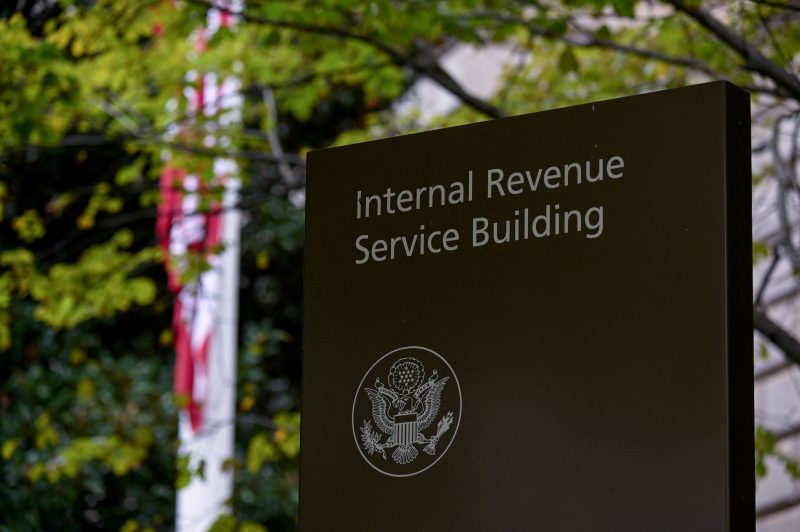The Internal Revenue Service, which funds nearly everything the federal government does, uses information technology that is creaking with old age. Some of its computer systems are so antiquated, a federal watchdog complains, that it’s difficult to find people who know how to work them.
In one example, a Government Accountability Office report released this month notes the tax agency’s use of an “obsolete programming language” called COBOL, which could lead to “difficulty finding employees with such knowledge,” adding that this “shortage of expert personnel available to maintain a critical system creates significant risk to an agency’s mission.”
That means, the report continues, the “IRS will face mounting challenges in continuing to rely on a system that has software written in an archaic language.”
GAO deemed 33 percent of IRS applications, 23 percent of software and 8 percent of hardware as “outdated but still critical to day-to-day operations.” This includes applications 25 to 64 years old and software up to 15 versions behind. “These legacy assets will continue to contribute to security risks, unmet mission needs, staffing issues, and increased costs,” GAO declared.
“A private company with tens of millions of customers would go belly up if their information technology was older than the CEO’s parents,” said Tony Reardon, president of the National Treasury Employees Union, which represents IRS employees. “Yet that is what the IRS deals with every day.”
The use of obsolete systems, he added, “most certainly discourages people trained in cutting-edge computer technology from pursuing a career at the IRS.”
Aggravating this old-age drama is the tax agency’s recent suspension of six modernization projects, which the GAO said includes operations “essential to replacing the 60-year-old Individual Master File (IMF),” described as “the authoritative data source” for individual tax accounts. The IRS had been trying to replace the master file for more than a decade but then decided to reassign employees to other work.
“As a result, the schedule for these initiatives is now undetermined,” GAO said. The target completion date, announced last year as 2030, “is now unknown. This will lead to mounting challenges in continuing to rely on a critical system with software written in an archaic language requiring specialized skills.”
All this makes trouble for taxpayers, who paid $4.1 trillion in taxes and were refunded $1.1 trillion in fiscal 2021.
The IRS’s “Where’s My Refund” application is in high demand, but on a GAO podcast accompanying the report, David B. Hinchman, the watchdog’s director of IT & cybersecurity, said the program “isn’t capable of accessing detailed information on an individual’s tax return status,” leaving many disappointed. Compounding the problem, Hinchman said taxpayers then call the IRS’s toll-free numbers, “which due to IRS staffing shortages might, at best, have insanely long waits to talk to someone, at worst might actually go unanswered.”
Money for modernization apparently isn’t the problem. The IRS reported spending almost $7 billion on IT in fiscal 2021 and 2022 combined, according to GAO. Nearly $80 billion for the IRS in the Inflation Reduction Act, approved in August, included almost $4.8 billion for business systems modernization and more than $25.3 billion for operations support, which includes operating and maintaining its IT systems.
The IRS has long been a Republican target and last month, in one of the first actions after the party won control of the House, it voted to rescind the $80 billion boost, on a straight party-line vote. A House Ways and Means Committee statement claimed Democrats had “supercharged” the IRS and “have long used the IRS and the tax code as a political weapon.” A committee staffer said the rescission would not hit business systems modernization and taxpayer services. The House bill has little chance of passing the Senate.
Rep. Gerald E. Connolly (D-Va.), who requested the GAO report, complained that Republicans previously were “starving the agency,” leaving it “understaffed and under-resourced,” adding that “the IRS does not even have its arms around its legacy IT problem.”
Yet, the IRS had 21 IT modernization initiatives in August 2022, GAO reported, but more than a quarter of them did not have time frames for addressing antiquated systems. Without that, “IRS lacks accountability for completing this key element,” GAO said.
“At the end of the day, IRS relies extensively on information technology to perform mission-critical functions,” Hinchman said. “IT is literally the vehicle on which our taxes are processed. However, this vital technology relies on the heavy use of outdated and expensive legacy systems.”
Those ancient systems are a main reason “taxpayer service has been awful the last few years,” said Erin M. Collins, the IRS’s national taxpayer advocate. “Historically, the IRS has been light-years behind private financial institutions in its technology and service.” Millions of paper tax returns “are still keystroked digit-by-digit into IRS systems,” she said, because the agency doesn’t scan the paperwork.
But even beginning this tax season with a backlog millions of returns long, Collins said the IRS, having recently hired 5,000 additional customer service representatives, is “in a better position” now than that previous two years.
The IRS’s response included in the report acknowledged the GAO audit “is a generally accurate description of the agency’s operating environment” and agreed with the watchdog’s nine recommendations, including setting time frames to complete modernization plans. The IRS said it recognizes maintaining old systems “contributes to the rising costs of operations and maintenance; this trajectory remains a significant risk …”
“We have taken a series of actions to address these important issues,” the IRS continued, but added that even the antiquated systems “that use older programming languages, remain secure and stable.”
Fully addressing those issues can’t happen quickly enough for Connolly.
“We all know that customer experience should be a top priority for an agency with a nearly ubiquitous public footprint,” he said. “Our tax system is complicated enough. IRS IT should be solving, not contributing to, the problem.”



























